We always see some beautiful milky way photos but maybe sometimes we will ask, why they look so different in colors?
It is about the color temperature problem. Experienced photographers know that it is supposed to keep White Balance with the right settings to get photos with rich colors and look like the real world. You have to tell the camera what is black and what is white.
Color temperature is easy to change with the change of light. If you go under the sun, the color is warm. If you go into shadows the color also becomes cold. Without relevant training, we may not be able to detect color temperature changes. Our brains will automatically tell us which is white but the camera doesn’t. It just uses an algorithm to calculate the colors, by pre-written procedures and rules. It is easy to misjudge.
There are many reasons to confuse the camera. The following photo was taken in a mountainous area where observational conditions are excellent. The air is good and very low light pollution. The photo should be theoretically showing the true color of the milky way.
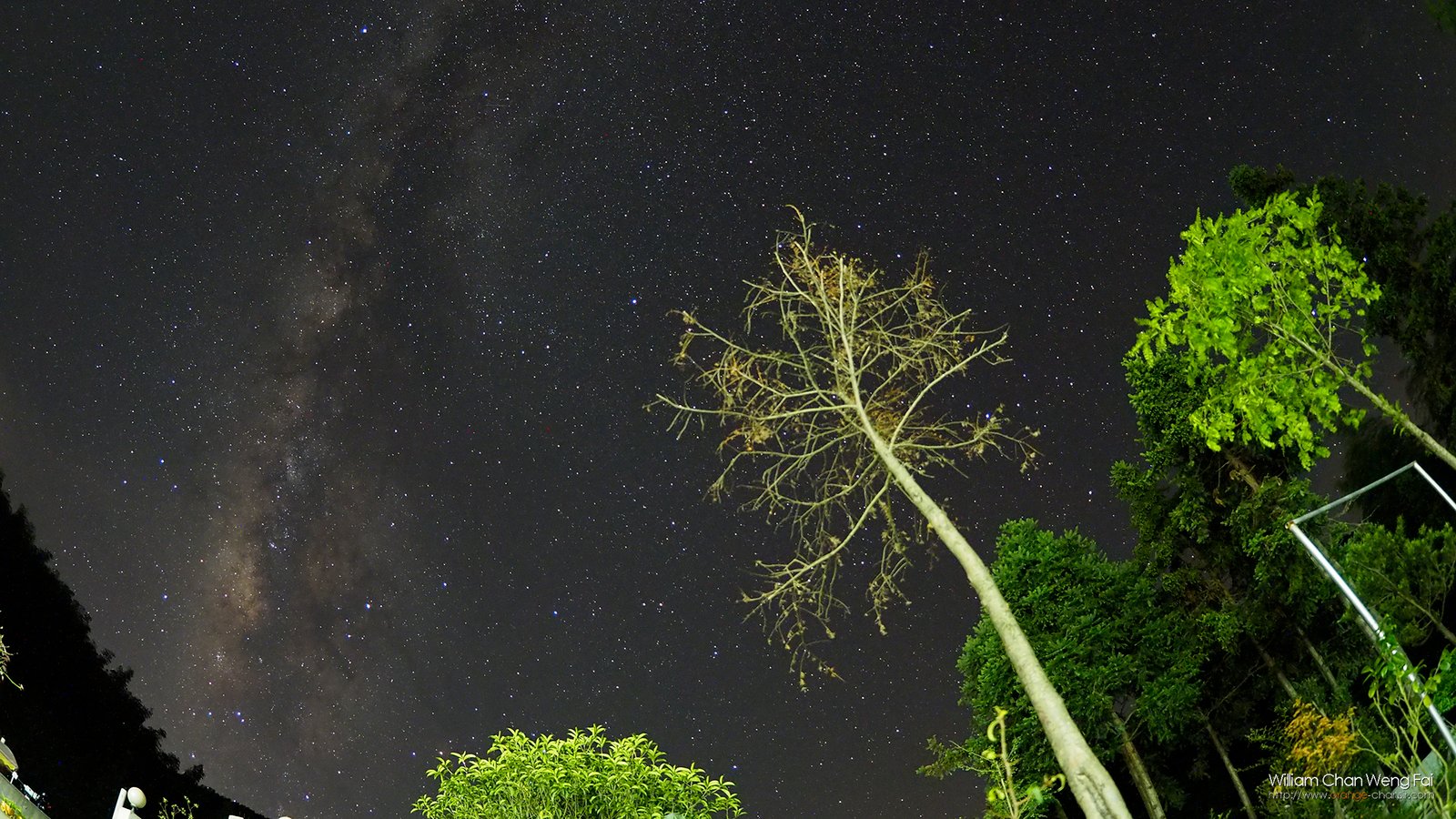
In summer, we are looking towards the core of the galaxy. The color of the night sky should be pure black and the galaxy should be lightly golden. There is a supermassive black hole at the center of the galaxy. All matters are sucked into the black hole and it emitted radiation at the same time. In addition, the images of the galaxy are influenced by the “redshifted” due to the expansion of the universe, the distance changed of the stars, and also by the refraction of our atmosphere. The final color of the image will be like that. However, I just want to talk about “what is the colors should be in a photo” but not want to talk about the colors in science.
I took the following photo at Hac Sa, the southernmost point of Macau S.A.R., China. Macau is a city with strong light pollution, so the Milky Way looks different from the true color.
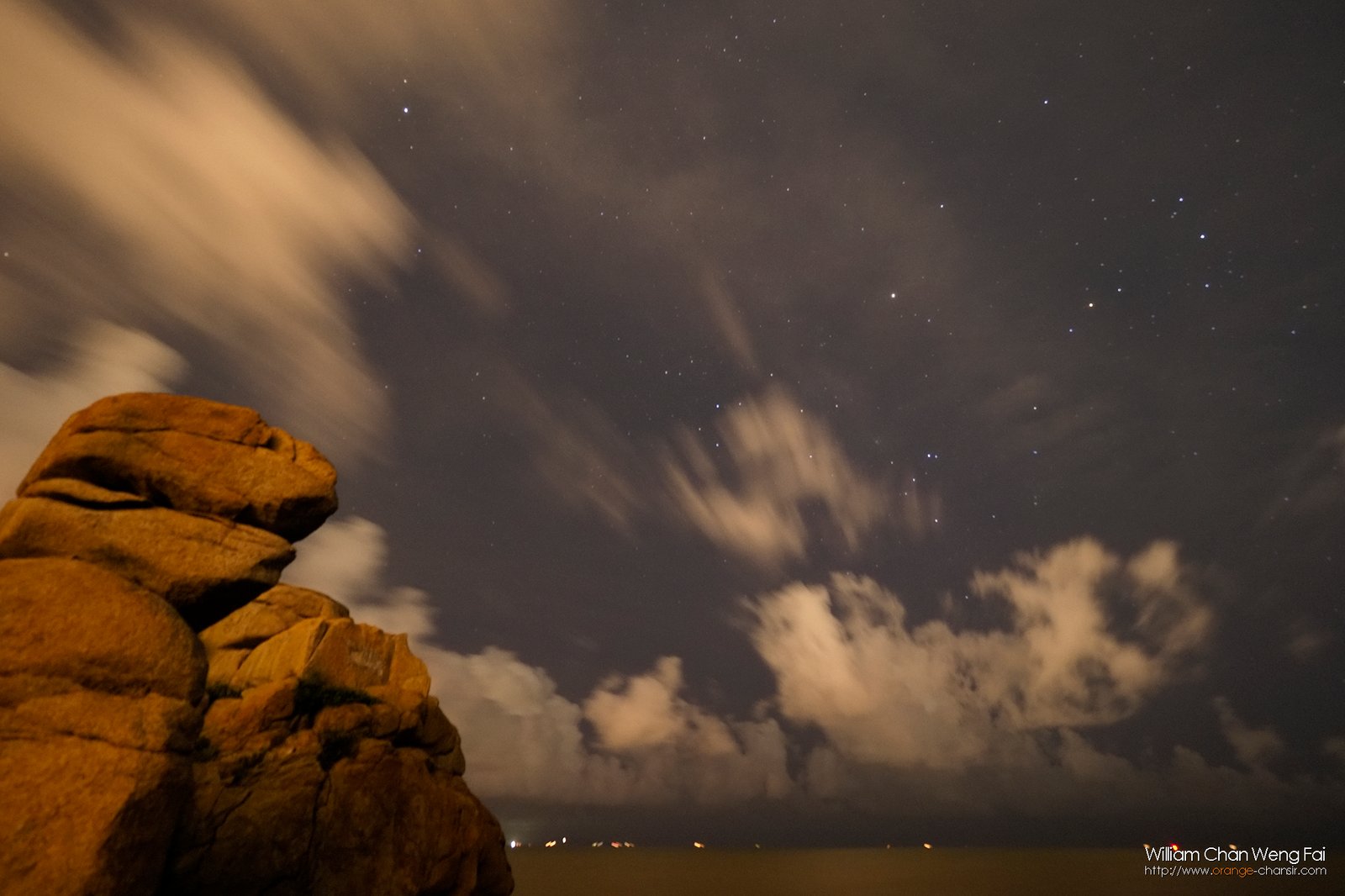
Light pollution caused the photo to look yellow. The galaxy is nearly disappeared too. We can try to adjust the contrast and the exposure to see the result.
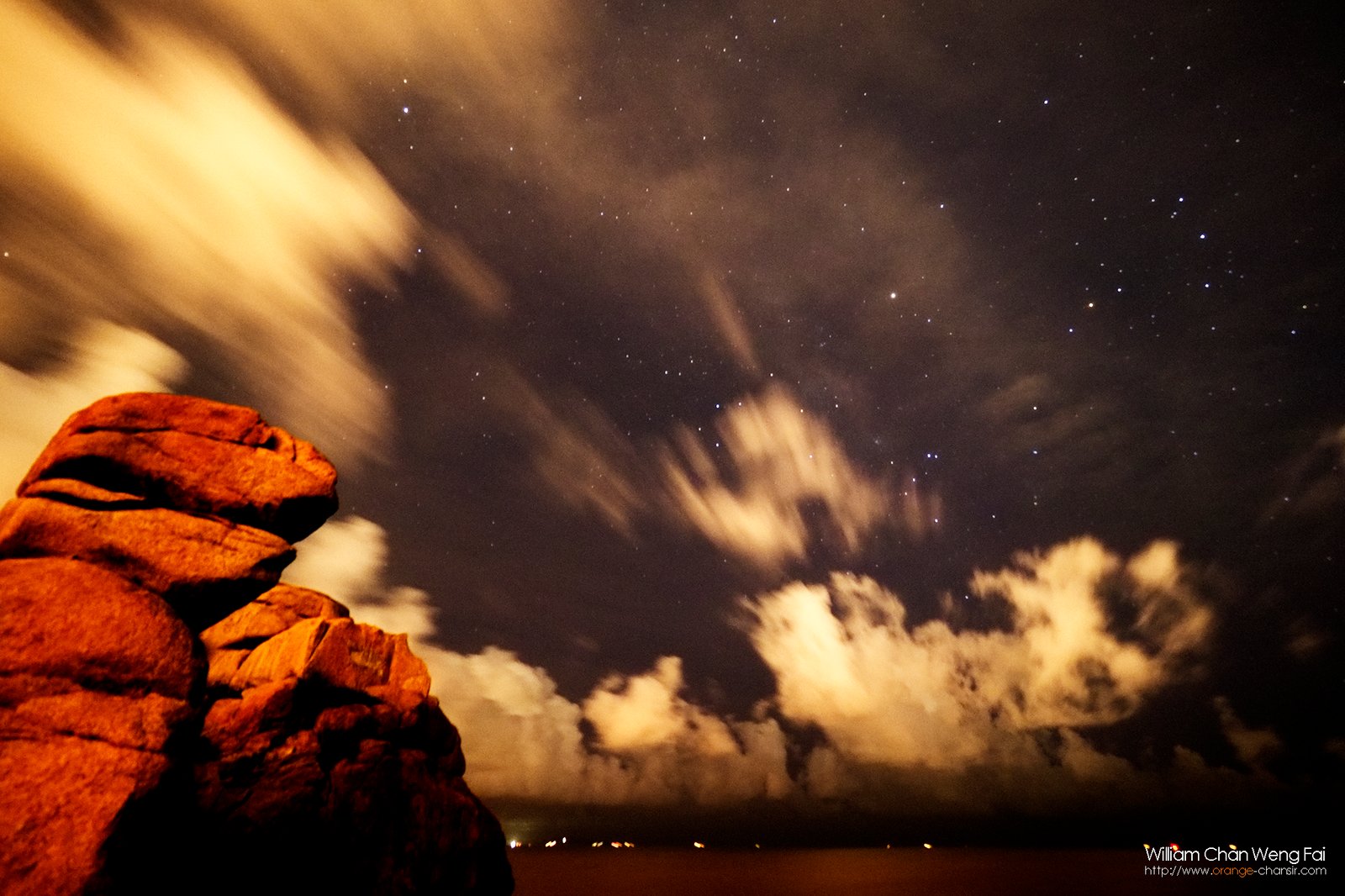
The Milky Way is more clear now, but the photo is extremely yellow. We are now trying to adjust the photos with the same nature as the photos taken with lesser light pollution conditions.
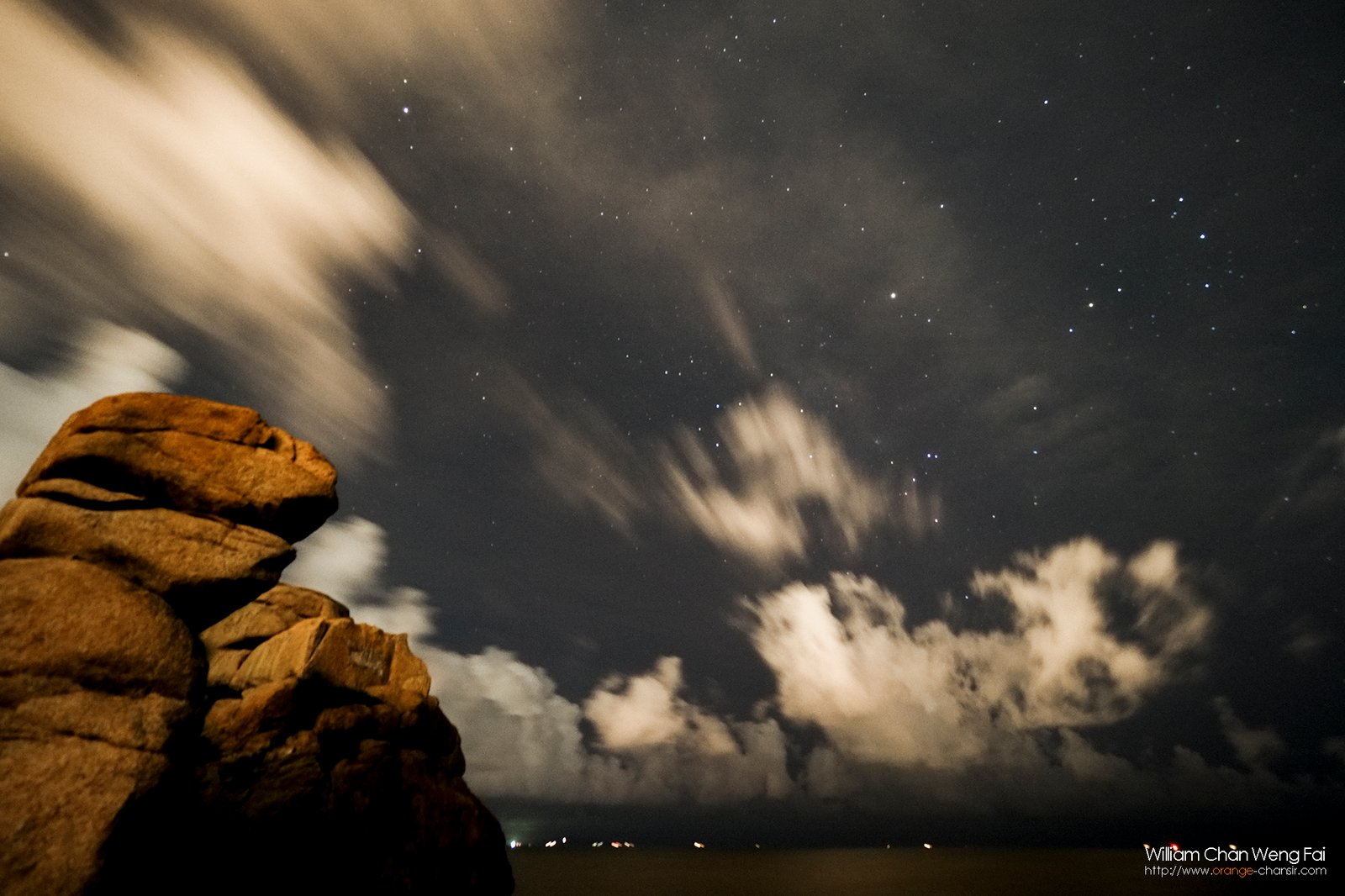
We have to adjust the white balance of different elements in the photos. Post-processing is a procedure to make sure the photos present to audiences in what we want. Now we are trying to make sure the photos in the color they should be.
I took these photos in the summer of 2020.
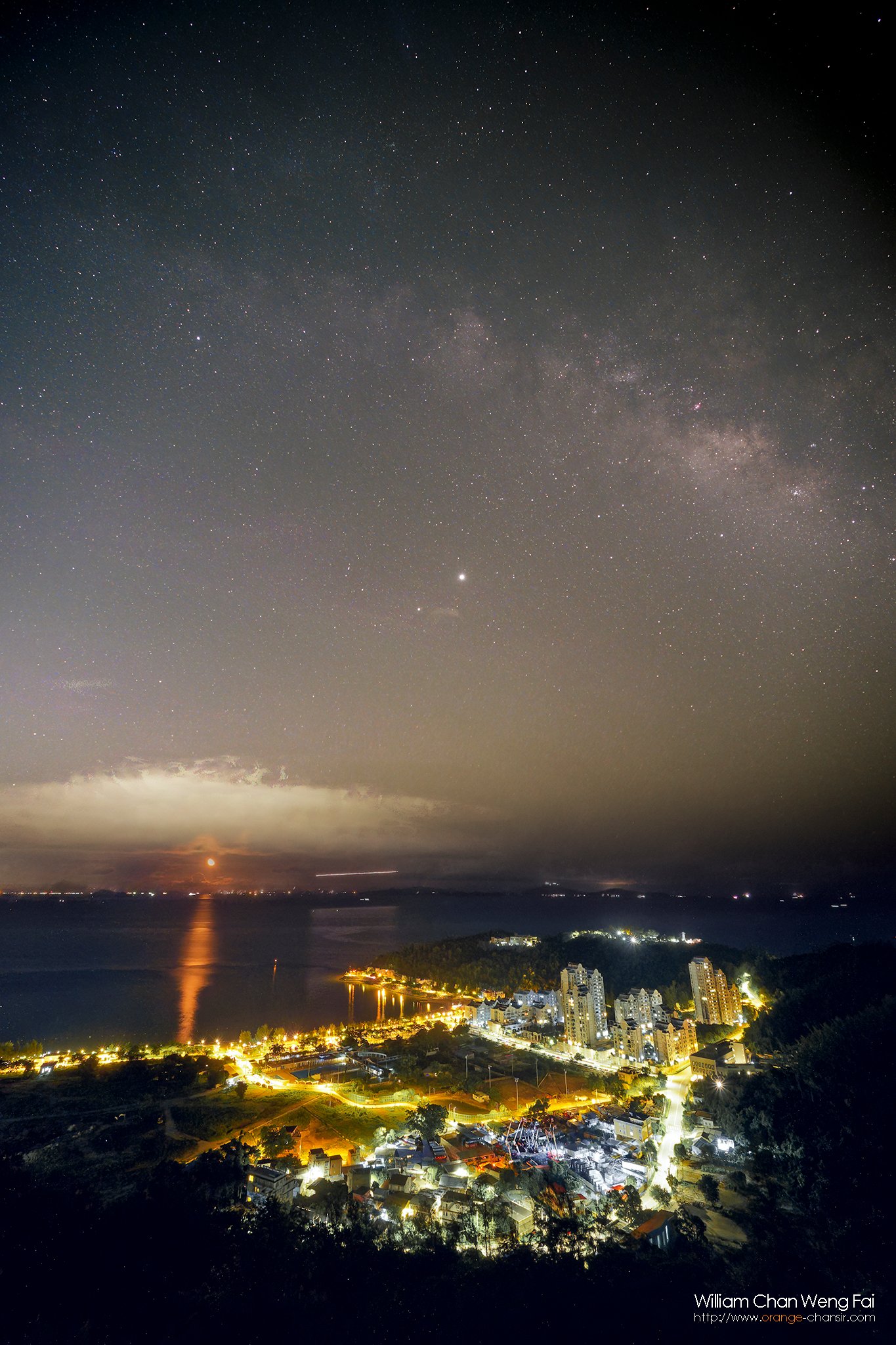
In Macau, we have to go to the southmost point, Hac Sa to take photos of a starry sky.
I took this photo with extremely good weather before the typhoon attacking. The light pollution was lesser with good air quality. It still a little bit of light pollution there so the images show yellow. In post-processing, I try to make sure the galaxy in the right color it should be (keep the color temperature cooler) but also kept the influence of light pollution to make it looks closer to the “truth” view.
It is not easy. If I kept the sky in black color, the landscape will become more yellow. If I try to keep the landscape with cooler colors, the sky shows blue even the Milky Way will not show yellow.
The final answer is to separately deal with the sky and the landscape. The gradient tools will suit the situation.
Moonlight is another kind of light pollution that added another color to the sky. Sometimes different colors of spotlights, laser performances, etc., will make the sky into other colors, too.

With better weather conditions, light pollution filter and post-processing helps to restore the colors, too.
Of course, photography is never limited. The following photo was taken at the Karuizawa Nagano – PRINCE SNOW RESORTS in Japan, where you can see the sky in the photo is blue. Comparing with summer, Milky Way in winter always shows fewer colors (except the condition you took the H-alpha). I think that blue color can represent a quiet night too. That’s why I choose to leave the color shift a little bit to blue.

I agree that photography should not be too restrictive, as long as it is not excessive, just try to keep it science-based.
The night would have been black, the stars also have their colors, as long as we can maintain the color accuracy, the starry sky will appear in our photos.
At the end
If you accept the idea of my article … Congratulation! The numbers of “like” you get will be reduced in a straight line. It is because I found that the public doesn’t like the photos with the right colors. Publics always love it with super visual impact, colorful, better looks like a rainbow, sparkling as computer graphics…


Leave a Reply